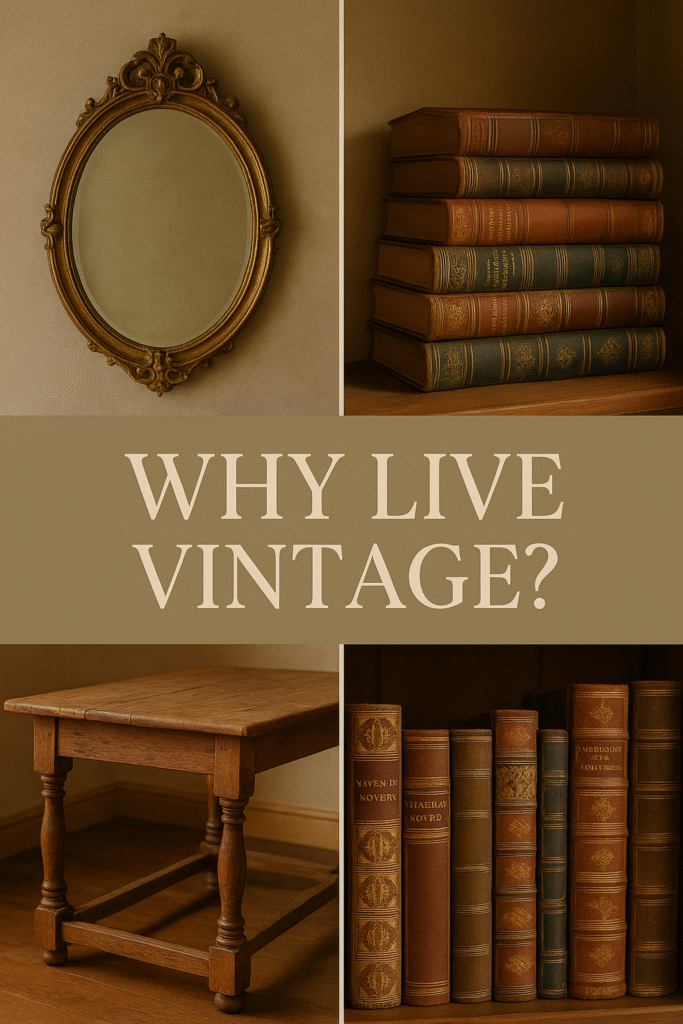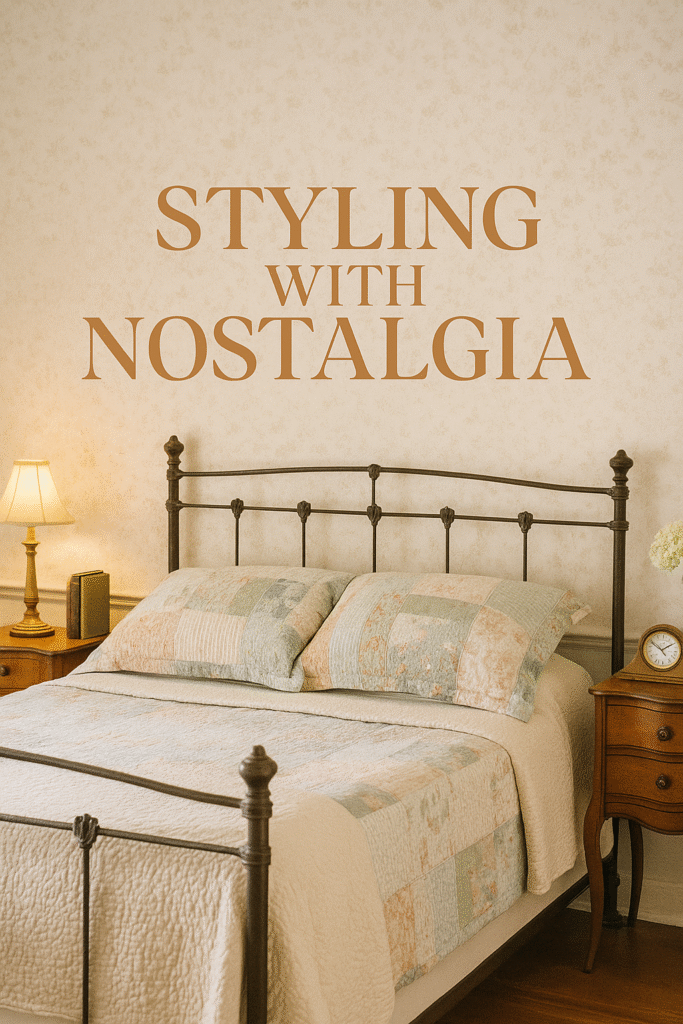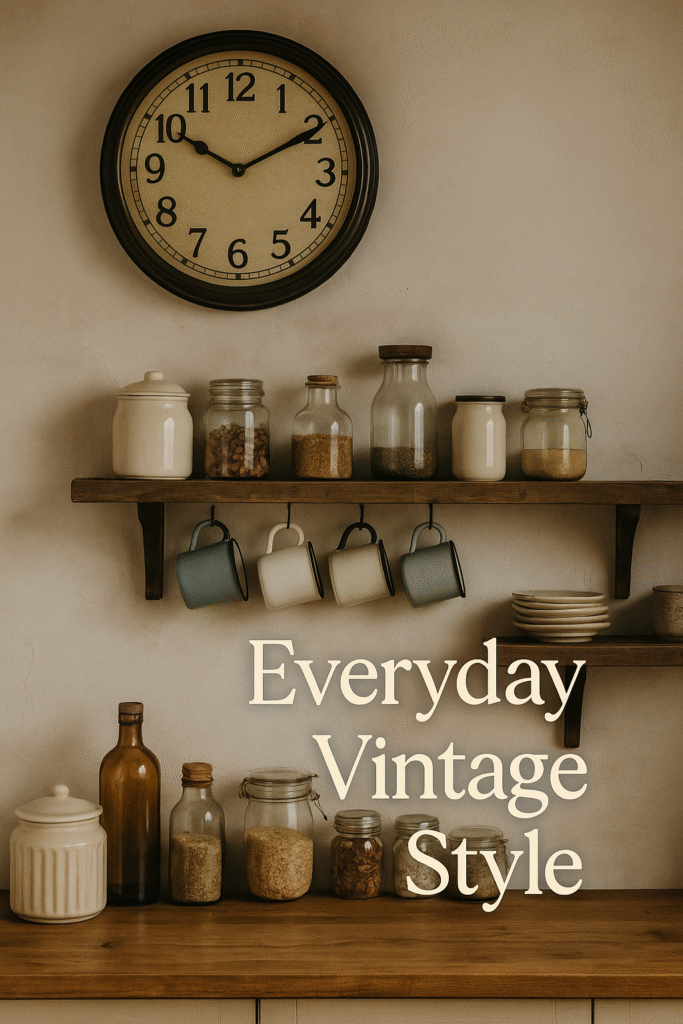There’s something magical about the vintage lifestyle—it’s more than just decorating with old pieces; it’s about embracing nostalgia and creating a home filled with stories. Vintage decor offers a sense of warmth, charm, and individuality that mass-produced items can’t replicate. Whether you’re drawn to flea markets, family heirlooms, or carefully curated collections, vintage living gives your home character that reflects your personal journey. In this guide, we’ll explore how shopping, collecting, and styling vintage can transform both your space and your lifestyle.
Why Choose Vintage Living?
Living with vintage pieces brings a sense of authenticity that modern items often lack. Each piece tells a story, whether it’s a mid-century lamp that lit up countless evenings or a farmhouse table where families once gathered. Choosing vintage is also a sustainable way to furnish your home, reducing waste and giving new life to older items. The result is a home that feels both unique and environmentally responsible.

In addition to sustainability, vintage living creates a sense of connection to the past. Many people find comfort in surrounding themselves with items that carry history and character. This connection fosters nostalgia, reminding us of cherished memories or family traditions. A vintage lifestyle isn’t about being outdated—it’s about layering history into modern life.
Finally, vintage living allows for true individuality. Unlike mass-market decor, no two vintage collections are ever the same. Your home becomes a reflection of your taste, your stories, and the treasures you’ve uncovered. This authenticity makes your space more personal, inviting, and conversation-worthy.
Shopping for Vintage Treasures
Shopping for vintage items is like going on a treasure hunt—you never know what gem you’ll find. Flea markets, estate sales, and thrift shops are excellent starting points for beginners. For those who prefer the convenience of online shopping, platforms like Etsy, Chairish, and eBay offer a wide selection of vintage decor. Every hunt is an adventure that brings you closer to pieces with real character.

The key to successful vintage shopping is knowing what to look for. Pay attention to craftsmanship, materials, and signs of authenticity. High-quality woods, solid construction, and original hardware often indicate a valuable find. With a bit of practice, you’ll learn how to spot pieces that can elevate your home.
It’s also wise to shop with a vision. Think about your home’s color palette, room needs, and overall style before buying. Vintage shopping can be overwhelming without a plan, so having a checklist helps you choose items that truly fit your space. This way, every purchase becomes a purposeful addition, not just an impulse buy.
Collecting with Purpose
Collecting vintage items is a rewarding hobby, but it’s important to curate with intention. Instead of gathering random objects, focus on themes that inspire you—such as vintage glassware, antique books, or mid-century furniture. A thoughtful collection feels cohesive and elevates the design of your home. It also ensures your pieces are meaningful rather than cluttered.
Purposeful collecting also makes your home more functional. For example, vintage cookware can be used in the kitchen while also serving as decor. Old trunks can double as storage and coffee tables. When your collection blends style and practicality, your home feels balanced and lived-in.
Additionally, collecting vintage helps preserve cultural history. Every piece has a backstory, from the era it was made to the people who used it. By curating and caring for these items, you become part of that story, ensuring it’s passed down. Collecting isn’t just about ownership—it’s about stewardship of history.
Styling a Home with Nostalgia
Styling your home with vintage decor is all about blending the old with the new. Too many antiques can make a space feel like a museum, but mixing them with modern pieces creates balance. For instance, pair a rustic farmhouse table with sleek chairs, or add a vintage mirror to a minimalist hallway. This harmony gives your home personality without feeling outdated.

Layering is key when decorating with nostalgia. Vintage textiles, such as quilts or rugs, add warmth and depth to a room. Mixing in smaller accents—like clocks, picture frames, or books—makes a space feel more authentic. Each item contributes to a sense of charm and history.
Lighting also plays a role in creating a nostalgic atmosphere. Vintage lamps, chandeliers, or sconces provide character that standard lighting can’t replicate. Soft, warm light enhances the cozy feeling of a space, making your home inviting. With the right styling, nostalgia becomes a living part of your daily routine.
Flea Markets and Thrift Shops: A Beginner’s Guide
Flea markets and thrift shops are goldmines for vintage lovers, but they can be overwhelming. Start small by visiting local shops to get a feel for what’s available. Over time, you’ll learn how to scan quickly and identify the best pieces. Each trip is an opportunity to refine your eye for vintage gems.
When shopping these places, always check the quality before buying. Look for solid construction, natural wear, and original details that signal authenticity. Don’t be afraid to ask sellers questions—many love to share the history of their items. Negotiation is often expected, so be ready to bargain politely.
Finally, bring essentials like cash, tape measures, and photos of your home for reference. These tools will help you decide if a piece fits both physically and stylistically. With preparation and patience, flea markets and thrift shops become exciting adventures rather than overwhelming hunts.
Vintage Decor in Everyday Life
Vintage decor isn’t just for special rooms—it can be part of your daily lifestyle. Incorporating small touches, like a retro clock in the kitchen or antique glassware for morning coffee, adds charm to routines. These details make everyday tasks feel more intentional and enjoyable. Living with vintage is about celebrating beauty in the ordinary.

Another way to integrate vintage into daily life is through personal rituals. Using a vintage writing desk for journaling or a record player for music creates moments of nostalgia. These experiences enrich your lifestyle and help you appreciate the past in the present. It’s a way of slowing down and savoring your environment.
Vintage decor also encourages mindfulness about consumption. Instead of constantly buying new, you learn to treasure and maintain what you have. This shift in mindset not only saves money but also creates a home filled with meaningful items. Everyday living becomes more thoughtful and connected to history.
The Emotional Connection of Nostalgia
One of the most powerful aspects of vintage living is the emotional connection it creates. Nostalgia can transport us to cherished memories, whether it’s childhood visits to grandparents’ homes or the charm of mid-century design. Surrounding yourself with these reminders fosters a sense of comfort and belonging. Vintage decor becomes more than style—it’s an emotional anchor.
Nostalgia also strengthens bonds within families. Heirlooms and passed-down furniture carry stories of generations. Displaying these items in your home helps preserve family history while creating opportunities for storytelling. In this way, vintage living connects the past, present, and future.
The emotional connection of nostalgia can even boost well-being. Studies show that surrounding ourselves with meaningful objects increases happiness and reduces stress. Vintage living, therefore, isn’t just a design choice—it’s a lifestyle that nurtures emotional health.
Sustainability in Vintage Living
Vintage living naturally aligns with sustainability. By purchasing pre-loved items, you’re reducing the demand for mass production and minimizing waste. Each vintage piece saved from landfills contributes to a healthier planet. This eco-friendly approach makes vintage decor a responsible choice.
Sustainable vintage living also encourages creativity. Instead of buying new, you find ways to restore and repurpose old items. For example, an old dresser can be refinished into a bathroom vanity, or antique crates can become bookshelves. This mindset makes your home more resourceful and unique.
Supporting local thrift shops and flea markets also strengthens communities. Many of these shops contribute to charities or small businesses. By choosing vintage, you’re not only helping the planet but also uplifting your local economy. Sustainability and nostalgia go hand in hand with this lifestyle.
The vintage lifestyle is more than a design trend—it’s a way of living that values history, sustainability, and individuality. Shopping for treasures, collecting with intention, and styling with nostalgia creates a home filled with meaning. Beyond the decor, it’s about embracing a slower, more thoughtful approach to life.
Whether you’re hunting for treasures at flea markets or styling heirlooms with modern pieces, vintage living invites joy into your home. Every piece you choose adds to your personal story and connects you with the past. It’s not about perfection but about celebrating the beauty in imperfection and history.
By adopting the vintage lifestyle, you create a home that feels warm, authentic, and truly yours. The combination of nostalgia, sustainability, and creativity ensures your decor will never feel disposable. Instead, it becomes a lasting reflection of who you are and what you love.
Conclusion
The vintage lifestyle is more than a design trend—it’s a way of living that values history, sustainability, and individuality. Shopping for treasures, collecting with intention, and styling with nostalgia creates a home filled with meaning. Beyond the decor, it’s about embracing a slower, more thoughtful approach to life.
Whether you’re hunting for treasures at flea markets or styling heirlooms with modern pieces, vintage living invites joy into your home. Every piece you choose adds to your personal story and connects you with the past. It’s not about perfection but about celebrating the beauty in imperfection and history.
By adopting the vintage lifestyle, you create a home that feels warm, authentic, and truly yours. The combination of nostalgia, sustainability, and creativity ensures your decor will never feel disposable. Instead, it becomes a lasting reflection of who you are and what you love.
